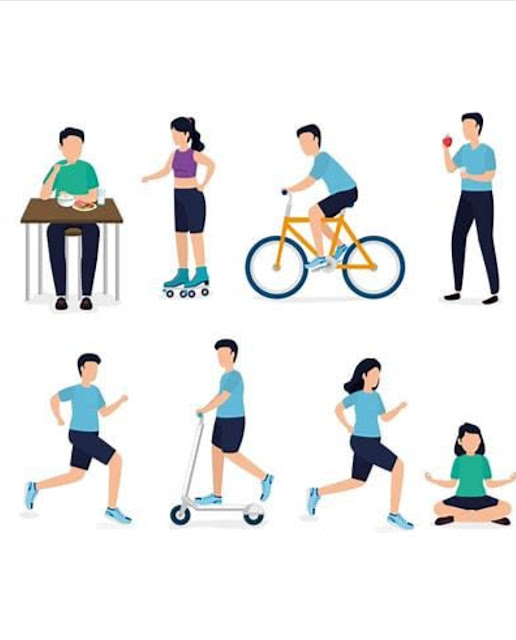To safely shed 5 pounds in a week, eliminate excess calories, replace liquid drinks with water, cut out sugar, avoid processed carbs, and reduce salt. Practice healthy habits by keeping a food and weight diary, aiming for 1,200 to 1,800 calories per day, finding inner motivation, seeking support, and setting realistic goals.
Remember, gradual and sustainable weight loss is healthier than drastic measures, so prioritize well-being and make lasting lifestyle changes.
How to Shed 5 Pounds in a Week?
Take into account these tactics if you want to shed 5 pounds in a week without risk. Keep in mind that losing weight quickly might be dangerous, so speak with your doctor before making any significant adjustments:
Get Rid of Extra Calories:
- Swap out all liquid beverages for water: Bid adieu to carbonated beverages, booze, and milky coffee drinks.
- Drink zero-calorie drinks: Drink zero-calorie drinks such as black coffee (no sugar or milk) and hot or iced tea, along with lemon water.
- Eliminate sugar: Eliminate sugar by eliminating foods that have a lot of added sugar. Instead, try dried fruit, cinnamon-baked apples, or a bowl of berries.
- Steer clear of refined carbohydrates: Steer clear of refined carbohydrates such as pasta, white bread, crackers, and baked goods. Choose alternatives made entirely of whole wheat.
- Cut back on salt to lose water weight: Select unseasoned meats and prepare items low in salt.
Develop Healthful Habits:
- Maintain a food supply and weight journal to track your advancement.
- Determine how many calories you can eat each day depending on how active you are. Try to consume 1,200–1,800 calories daily.
- Whether it's an impending vacation or improved health, concentrate on what matters to you to find your inner inspiration.
- Seek the assistance of professionals or friends who promote constructive change.
- Aim for weekly weight loss of one to two pounds, and set reasonable targets.
Recall that steady weight loss over rapid weight loss is healthier. Put your health first and adopt long-lasting lifestyle adjustments.
How much should I exercise per day?
Aim for at least 30 minutes a day of moderate physical activity as a general objective. You might need to exercise more if you want to reach certain fitness objectives, maintain weight loss, or lose weight. Reducing your sitting time is crucial as well because your chance of developing metabolic issues increases with the number of hours you spend sitting each day.
Here are some recommendations derived from various sources:
15 minutes a day of vigorous activity or at least 30 minutes a day of moderate exercise as suggested by Mayo Clinic.
According to Harvard Health, at least 150 CME points should be attained each day, and this can be done by engaging in moderate to vigorous exercise.
- World Health Organisation (WHO): The revised recommendations call for at least 150 to 300 minutes of moderate activity or 75 to 150 minutes of vigorous activity each week, or a mix of the two.
- CDC: Perform muscle-strengthening exercises for each of the major muscle parts at least twice a week in addition to aerobic activity.
To achieve long-term success, keep in mind that finding an exercise regimen you enjoy and being consistent is essential. Pay attention to your body, drink plenty of water, and see a doctor if you have any concerns.
What are some examples of moderate exercise?
- Quick Walking: Go for a quick stroll on the treadmill or outside.
- Jogging: To raise your heart rate, take up gentle running.
- Elliptical Training: Make use of the gym's elliptical trainer.
- Cycling: On flat terrain or with few hills, cycle at a speed of less than ten miles per hour.
- Swimming: Take pleasure in relaxing swims.
- Take part in classes that involve water aerobics.
- Move around the dance floor with ballroom and line dancing.
Recall that the objective is to partake in activities that elevate your heart rate and respiration rate. Speaking should be possible while performing mild
Exercise will make breathing more difficult than it would be otherwise. Try to get in 30 minutes five days a week, or two and a half hours total. Your daily minutes can be divided into small periods, each lasting ten minutes or more. For even greater health benefits, when your fitness level increases, think about upping your weekly moderate aerobic exercise to 300 minutes (five hours).
Related Topic: How to lose weight fast: 10 healthy and tasty recipes that will help you lose weight | vegan diet plan for fast weight loss
What are some examples of vigorous exercise?
Of course! High-intensity physical activity that dramatically increases heart rate and has great cardiovascular benefits is referred to as vigorous exercise. Here are a few instances of physically demanding tasks:
#Running: Running at a hard speed counts as vigorous exercise, whether it's done outside or on a treadmill.
#Riding a bike at a speed of 10 mph or more: Get on your bike and start peddling hard to raise your heart rate.
#Strolling Quickly Uphill with a Bulky Backpack: This strenuous exercise involves walking uphill while adding resistance.
#Jump Rope: An excellent technique to increase coordination and cardiovascular fitness.
#Swimming: Go through the pool in quick laps.
#Cycling quickly (14–16 mph): Push yourself and get some distance.
#Basketball: Basketball is a fast-paced sport that requires physical exertion.
#Playing football: sprinting, running and Swift motions in a football match are acceptable.
#Tennis Singles: Tennis singles offers an intense workout because of players' quick reflexes and agility.
Remember that intense physical activity ought to cause you to breathe deeply and elevate your heart rate considerably. For maximum health benefits, try to get in 75–150 minutes of intense activity every week. Additionally, remember to warm up and cool down both before and after your strenuous exercise!
Is it possible to lose 5 pounds in a week?
Yes, It's possible to shed five pounds in a week depending on many variables, but it's crucial to approach weight loss sustainably and healthily. Let's examine the specifics:
Healthy Weight Loss Rate: Experts say that shedding 1-2 pounds (0.45-0.9 kg) a week is a safe and healthy weight loss goal.
If you lose weight faster than this, you run the danger of developing health issues like gallstones, muscle loss, malnutrition, and slowed metabolism. As your body uses glycogen stores during the first phase of a new activity or diet plan, you may lose more weight due to water weight.
Safe Weight Loss Techniques:
1. Calorie Shortfall: You need to develop a calorie deficit to drop five pounds of weight loss:
2. Caloric Deficit:
For seven days, you must establish a caloric deficit of about 3,500 calories to lose five pounds.
The following are some tactics:
- Swap out liquid beverages: Replace sugary beverages with water. Refrain from adding milk or sugar to beverages.
- Cut Sugar: Opt for healthier substitutes, such as berries or dried fruit, to cut down on additional sugar consumption.
- Steer clear of processed carbohydrates by removing baked products, pasta, white bread, and crackers from your diet.
- Reduce Salt: To lose water weight, consume less salt.
- Determine Your Daily Calorie Allotment: Depending on your needs, aim for 1,200–1,800 calories each day.
- Sustaining Reduced Body Mass:
Recall that maintaining your weight loss is the true challenge—losing it is just half the fight.
Losing weight gradually increases the likelihood that it will be maintained over time.
Make an effort to develop healthy eating habits, such as increasing your intake of fruits and vegetables and lowering your intake of beverages with added sugar1.
In conclusion, while quick weight loss is feasible at first, maintaining results and general health requires striving for a sustainable pace. Before beginning any major diet or exercise regimen adjustments, always get medical advice.
What are some healthy foods to eat while trying to lose weight?
Of course! Making the correct meal choices can have a big impact on weight loss efforts. The following nutrient-dense foods can support you in your weight loss efforts:
- Eggs: These delicious, high-protein treats not only keep you full but also support the maintenance of muscle mass as you lose fat1. Savour them in omelettes, boiling, or scrambled.
- Greek Yoghurt: Rich in probiotics and protein, Greek yoghurt helps maintain intestinal health and keeps you full. Select low-fat or plain varieties.
- Green peas: Green peas are small green powerhouses that are high in protein and fibre. Toss them into soups, stir-fries, and salads.
- Lean Beef and Pork Cuts: Select lean cuts to satisfy your need for protein without consuming too much fat. For an excellent dinner, grill or roast them.
- Lentils: Rich in plant-based protein and fibre, lentils are a versatile food. Add them to salads, stews, and soups.
- Skinless chicken breast: Skinless chicken breast: is an excellent source of lean protein for grilled, salad, and wraps.
- Spinach: Spinach is a fantastic addition to salads and smoothies because it is low in calories and high in vitamins and minerals.
- Tuna: Convenient for quick lunches, canned tuna is high in protein and omega-3 fatty acids.
- Whole Grains: Choose whole grains such as muesli, brown rice and quinoa. They offer fibre and long-term energy.
- Fruits and Vegetables: For vitamins, minerals, and antioxidants, eat an abundance of colourful food. Broccoli, bell peppers, apples, and berries are all great options.
Recall that balanced meals and quantity control are essential. For efficient weight loss, pair these foods with frequent exercise.
The Bottom Line
To shed five pounds in a week necessitates a calculated approach. To do this, concentrate on consuming fewer calories than you burn to create a caloric deficit. Choose nutrient-dense foods such as fruits, whole grains, and lean meats. Include moderate exercise in your regular routine, such as cycling or brisk walking. Keep in mind that losing weight quickly should be safe and sustainable. Before making any big dietary or exercise changes, speak with a healthcare provider. If you put in the effort and maintain equilibrium, you can succeed!


.jpeg)

.jpeg)
.jpeg)





0 Comments